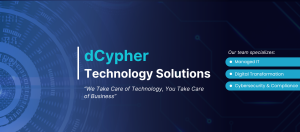
Table of Contents
- Introduction
- Understanding Penetration Testing
- Why Washington DC Requires Robust Cybersecurity
- Penetration Testing Process
- Benefits of Penetration Testing
- Conclusion
Introduction
In an era where cyber threats are increasingly sophisticated, Washington DC stands as a prime target due to its concentration of government agencies, contractors, and critical infrastructure.
The Australian Cyber Security Centre (ACSC) reported that in 2022, 41% of data breaches involved malicious or criminal attacks, with a significant portion attributed to cyber incidents.
This underscores the importance of proactive cybersecurity measures, such as penetration testing, to safeguard sensitive information and maintain public trust.
Understanding Penetration Testing
Penetration testing, commonly known as “pen testing,” is a simulated cyberattack conducted by cybersecurity professionals to identify and exploit vulnerabilities within an organization’s systems, networks, or applications.
The primary objective is to uncover weaknesses before malicious actors can exploit them, thereby enhancing the organization’s security posture.
Why Washington DC Requires Robust Cybersecurity
Penetration Testing Process
The process of penetration testing involves several key phases:
- Planning and Reconnaissance: Defining the scope and objectives of the test, followed by gathering information about the target systems.
- Scanning: Identifying open ports, services, and potential vulnerabilities within the systems.
- Gaining Access: Attempting to exploit identified vulnerabilities to gain unauthorized access.
- Maintaining Access: Determining if the vulnerability can be used to achieve a persistent presence within the system.
- Analysis and Reporting: Documenting findings, including exploited vulnerabilities, data accessed, and providing recommendations for remediation.
Benefits of Penetration Testing
Implementing regular penetration testing offers several advantages:
- Identifying Vulnerabilities: Proactively discovers weaknesses before they can be exploited.
- Enhancing Security Measures: Provides insights into areas requiring stronger security controls.
- Compliance Requirements: Assists organizations in meeting regulatory requirements and industry standards.
- Protecting Reputation: Safeguards the organization’s reputation by preventing data breaches and associated fallout.
- Cost Savings: Identifying and addressing vulnerabilities early can prevent costly breaches and downtime.
Conclusion
In conclusion, Washington DC’s prominence as a hub for government and critical infrastructure necessitates robust cybersecurity measures.
Penetration testing serves as a proactive approach to identifying and mitigating potential vulnerabilities, thereby enhancing the security posture of organizations within the region.
By investing in regular penetration testing, entities can safeguard sensitive information, maintain public trust, and ensure compliance with industry standards and regulations.
 :
https://dcypher.io/
:
https://dcypher.io/

